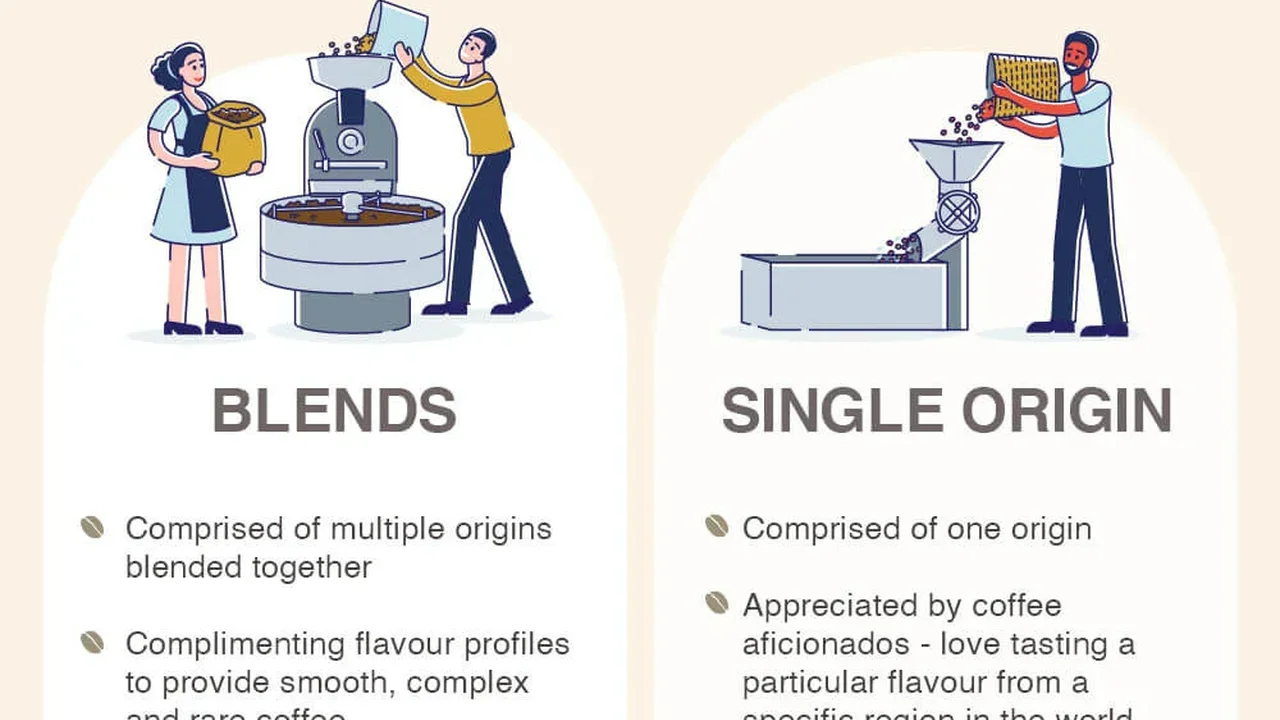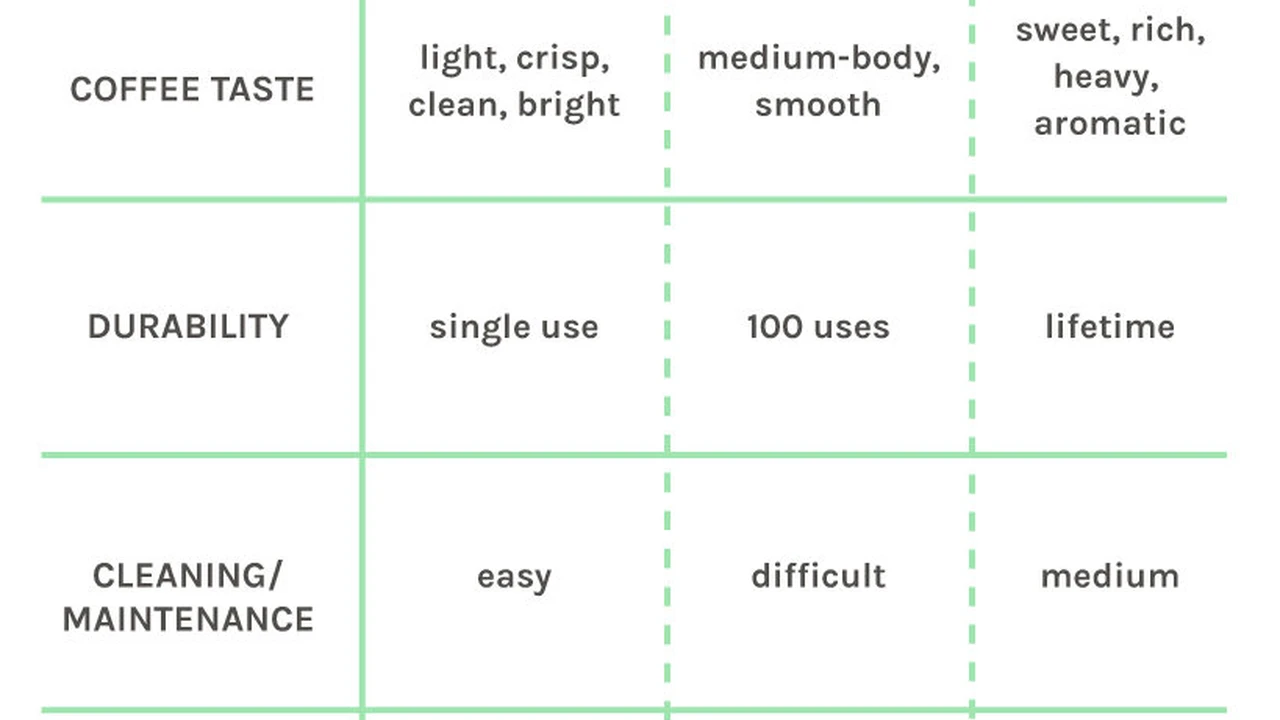Coffee and Health: Benefits and Potential Risks
Coffee pod machines offer convenience, but how does the coffee quality compare? We weigh the pros and cons of pod machines, considering ease of use, cost, and environmental impact. Make an informed decision.

The Allure of Coffee Pods: Quick and Easy Coffee
Let's face it, mornings are hectic. The snooze button is your best friend, and the thought of grinding beans, measuring coffee, and fiddling with a traditional coffee maker can feel like climbing Mount Everest before you've even had your caffeine fix. This is where coffee pod machines swoop in as the ultimate convenience champions. They promise a delicious cup of coffee with minimal effort – just pop in a pod, press a button, and boom, coffee's ready. But is that convenience worth sacrificing the rich, nuanced flavor you get from freshly ground beans? That's the million-dollar question we're tackling today. We'll dive deep into the world of coffee pod machines, comparing them to traditional methods, exploring their pros and cons, and helping you decide if they're the right choice for your lifestyle and your taste buds.Understanding Coffee Pod Machines: How They Work
Coffee pod machines are designed for simplicity. They typically use pre-packaged, single-serving coffee pods that contain ground coffee. The machine pierces the pod, pumps hot water through it under pressure, and dispenses the brewed coffee into your cup. There are several different types of coffee pod machines, each using a proprietary pod system. Some of the most popular brands include:- Nespresso: Known for its sleek design and wide variety of espresso-style pods.
- Keurig: A household name in North America, offering a wide range of coffee and tea pods.
- Dolce Gusto: Offers a variety of espresso, coffee, and even chocolate and tea pods.
- Tassimo: Uses a barcode system to automatically adjust brewing parameters for each pod.
The Pros of Coffee Pod Machines: Convenience and Speed
The biggest advantage of coffee pod machines is undoubtedly their convenience. They're incredibly easy to use, require minimal cleanup, and brew coffee quickly. Here's a breakdown of the key benefits:- Speed: Coffee pod machines can brew a cup of coffee in under a minute. Perfect for busy mornings.
- Ease of Use: No need to grind beans, measure coffee, or deal with filters. Simply pop in a pod and press a button.
- Minimal Cleanup: Just discard the used pod. No messy grounds to clean up.
- Consistency: The machine ensures consistent brewing, so you get the same result every time.
- Variety: Many brands offer a wide variety of coffee and tea pods, allowing you to experiment with different flavors and roasts.
- Single-Serving: Perfect for individuals or households where only one person drinks coffee.
The Cons of Coffee Pod Machines: Quality, Cost, and Environment
While coffee pod machines excel in convenience, they do have some drawbacks. The most significant concerns are related to coffee quality, cost, and environmental impact.- Coffee Quality: The ground coffee in pods is often pre-ground and can lose its freshness over time. This can result in a less flavorful and aromatic cup of coffee compared to freshly ground beans.
- Cost: Coffee pods are significantly more expensive than buying whole bean coffee and grinding it yourself. Over time, the cost of pods can add up significantly.
- Environmental Impact: Coffee pods generate a lot of waste. While some brands offer recyclable pods, many end up in landfills. The aluminum and plastic used in pods can take hundreds of years to decompose.
- Limited Customization: You're limited to the coffee options offered by the pod manufacturer. You can't easily adjust the grind size, coffee-to-water ratio, or other brewing parameters.
Coffee Quality Comparison: Pods vs. Freshly Ground Beans
The biggest difference between coffee brewed from pods and coffee brewed from freshly ground beans is the freshness and aroma. Freshly ground beans release volatile compounds that contribute to the coffee's complex flavor profile. These compounds degrade quickly after grinding, so the longer the coffee sits, the less flavorful it becomes. Coffee pods contain pre-ground coffee that has already lost some of its freshness. While manufacturers take steps to minimize this loss, the coffee in pods simply can't compare to the vibrancy of freshly ground beans. Think of it like this: Would you rather eat a freshly baked loaf of bread or a loaf of bread that's been sitting on the shelf for a few days? The freshly baked bread will have a richer aroma, a softer texture, and a more satisfying flavor. The same principle applies to coffee.Cost Analysis: Long-Term Expenses of Pod Machines
The initial investment in a coffee pod machine is often relatively low, but the long-term cost of buying pods can quickly add up. Let's compare the cost of brewing coffee with a pod machine to brewing with freshly ground beans:- Coffee Pod Machine: A basic coffee pod machine might cost around $100. Coffee pods typically cost around $0.50 to $1.00 per pod. If you drink one cup of coffee per day, the annual cost of pods could be $182.50 to $365.
- Traditional Coffee Maker: A good quality drip coffee maker might cost around $50 to $100. Whole bean coffee typically costs around $10 to $20 per pound. If you use one ounce of coffee per cup, the annual cost of coffee could be $22.81 to $45.62.
Environmental Concerns: Recycling and Sustainability
The environmental impact of coffee pods is a major concern. Most coffee pods are made of aluminum and plastic, which can take hundreds of years to decompose in landfills. The production and disposal of these pods contribute to pollution and resource depletion. Some companies are taking steps to address this issue by offering recyclable or compostable pods. However, even recyclable pods require energy and resources to process. Compostable pods are a better option, but they require a specific composting environment to break down properly. If you're concerned about the environmental impact of your coffee consumption, consider these alternatives:- Use a refillable pod: Many companies offer reusable coffee pods that you can fill with your own ground coffee. This eliminates the need for disposable pods altogether.
- Choose compostable pods: Look for brands that offer certified compostable pods.
- Recycle properly: Make sure to properly recycle your coffee pods if your local recycling program accepts them.
- Switch to a more sustainable brewing method: Consider using a French press, pour-over coffee maker, or traditional drip coffee maker. These methods generate less waste and allow you to use sustainably sourced coffee beans.
Recommended Coffee Pod Machines: Top Picks
If you've weighed the pros and cons and decided that a coffee pod machine is right for you, here are a few recommended models:- Nespresso Vertuo Plus: Known for its sleek design and wide variety of espresso-style pods. Offers both espresso and coffee options. Price: $150 - $200.
- Keurig K-Elite: A popular choice for its ease of use and versatility. Offers a wide range of coffee and tea pods. Price: $130 - $180.
- Dolce Gusto Genio 2: Offers a variety of espresso, coffee, and even chocolate and tea pods. Price: $100 - $150.
- Tassimo Bosch Vivy 2: Uses a barcode system to automatically adjust brewing parameters for each pod. Price: $80 - $120.
- Your coffee preferences: Do you prefer espresso or coffee? Do you want a machine that can brew both?
- The availability of pods: Make sure the brand you choose offers a wide variety of pods that you enjoy.
- The cost of pods: Compare the cost of pods from different brands.
- The environmental impact: Look for brands that offer recyclable or compostable pods.
- The machine's features: Do you want a machine with a built-in milk frother? Do you want a machine that can brew multiple cup sizes?
Alternative Brewing Methods: Exploring the Options
If you're looking for a more sustainable and flavorful coffee brewing method, consider these alternatives:- French Press: A simple and affordable method that produces a rich and full-bodied cup of coffee.
- Pour-Over Coffee Maker: Allows you to control the brewing process and create a customized cup of coffee.
- AeroPress: A versatile and portable coffee maker that produces a smooth and flavorful cup of coffee.
- Traditional Drip Coffee Maker: A classic and reliable method that's perfect for brewing large batches of coffee.
:max_bytes(150000):strip_icc()/277019-baked-pork-chops-with-cream-of-mushroom-soup-DDMFS-beauty-4x3-BG-7505-5762b731cf30447d9cbbbbbf387beafa.jpg)






